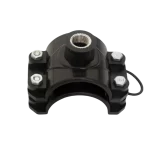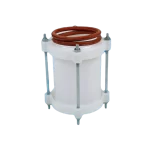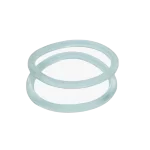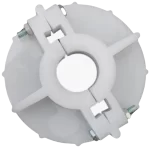The Comprehensive Guide to Plumbing Saddles: Types, Uses, and Benefits
What is the Function of a Plumbing Saddle?
A plumbing saddle is used to perform several key functions in a plumbing system:
Connect Pipes: Saddles allow for the creation of secure connections between pipes without the need for cutting, which is especially useful for adding new lines or branches to existing systems.
Support Pipes: In many cases, saddles help support pipes by stabilizing them in place, preventing sagging or misalignment.
Repair Leaks or Damage: Saddles are a quick and effective solution for repairing small leaks or fixing damaged pipes by creating a temporary or permanent seal around the affected area.
How plumbing saddles help in pipe connections
existing system. They are often used to branch off from the main pipe to connect new water lines or create new fixtures such as faucets, sprinklers, or drains. The saddle wraps around the pipe, providing a stable connection that ensures a leak-proof and durable connection. Saddles are commonly used in pipes made from materials like PVC, steel, or copper, which makes them versatile for different plumbing needs.
Advantages of using saddles for plumbing repairs
When repairing an existing plumbing system, saddles offer a time-saving and cost-effective solution. Instead of dismantling the pipe to add a branch line or fix a small leak, you can install a saddle around the pipe, which avoids costly replacement and reduces the downtime for repairs. Saddles are especially helpful in tight spaces or systems that are difficult to reach, offering a solution without the need for cutting or disturbing large sections of the pipe.
How is a Plumbing Saddle Installed?
nstalling a plumbing saddle is a straightforward process that can be completed quickly with minimal tools. Here’s how the installation process typically works:
Identify the installation point: Determine where you want to make the connection or add a new branch. Clean the area around the pipe to ensure a smooth surface for the saddle to sit on.
Position the saddle: Place the saddle around the pipe, ensuring it is aligned with the desired connection point. The saddle should fit snugly without overlapping the pipe too much.
Secure the saddle: Tighten the saddle around the pipe using the clamps or bolts provided. It’s important to make sure the saddle is secure to avoid any leaks or misalignment.
Test the installation: After installation, test the system by running water through the pipe to check for leaks. Tighten any screws or bolts if necessary.
Step-by-step guide to installing a plumbing saddle
The process of installing a plumbing saddle is relatively easy and can be done in just a few steps. Plumbers can quickly install saddles, making them perfect for making modifications or repairs in a hurry. This ease of installation reduces overall project time, making plumbing jobs more efficient.
Common mistakes to avoid during saddle installation
- Incorrect alignment: If the saddle is not aligned properly with the pipe, it can result in a poor connection that leads to leaks. Make sure the saddle is positioned correctly before tightening.
- Over-tightening: Tightening the saddle too much can damage the pipe, especially if it is made of PVC or another soft material. Use just enough force to secure the saddle, avoiding excessive pressure.
What is a Water Service Saddle?
A water service saddle is designed to connect a water service line to an existing water main. These saddles are commonly used in municipal water systems, irrigation networks, and residential plumbing where a new water line must be added to an existing pipeline. They create a branch connection without the need to cut into the existing water main, reducing the risk of leaks or disruptions.
How a water service saddle connects to distribution lines
Water service saddles are installed around the main water pipeline. Once secured, a hole is created in the pipeline, and the service line is connected. The saddle typically contains a valve or other fitting that allows water to flow into the new line. These saddles are crucial for expanding water distribution networks, especially in systems that require minimal disruption.
Typical applications of water service saddles in plumbing systems
Water service saddles are commonly used in municipal systems for adding new connections to residential homes, businesses, or other facilities. They are especially helpful when new buildings need to be connected to existing water mains without interrupting the service for other users.
What Are the Benefits of Using a Water Service Saddle?
Water service saddles provide several advantages, especially when you need to create a new connection to an existing water pipeline.
Durability and reliability of water service saddles
Water service saddles are typically made from materials like stainless steel, which is durable and resistant to rust and corrosion. This makes them long-lasting and reliable, even in harsh environmental conditions. The ability of these saddles to withstand pressure and constant use ensures that water distribution systems remain intact for extended periods of time.
How water service saddles minimize pipeline damage
Service saddles are designed to avoid the need for cutting or welding, which helps prevent damage to the existing pipeline. By clamping around the pipe and creating a stable connection, the saddle eliminates the need for more invasive methods of connecting new service lines. This minimizes the risk of damaging the main pipeline or disrupting water flow.
How Does a Water Service Saddle Work?
Water service saddles function by forming a strong, watertight seal around the pipe. This enables the saddle to create an efficient connection point for new service lines, which can be used to provide water to additional areas of a building or plumbing system.
Mechanics behind a water service saddle’s sealing function
The saddle is equipped with a sealing mechanism, usually a rubber gasket or similar material, which compresses tightly around the pipe when the saddle is fastened. This ensures that no water can leak out around the connection, even under high pressure.
How water service saddles prevent leaks in pipelines
By forming a tight seal, water service saddles prevent the risk of leaks, which can often occur when pipes are cut or improperly fitted. The design of the saddle ensures that water flows only through the new service line, not around the connection point, preventing costly water loss and damage.
What is a Pipe Support Saddle?
A pipe support saddle is used to support and stabilize pipes, ensuring they stay in place and remain aligned. These saddles are especially useful in systems where pipes need to be secured to avoid sagging or misalignment due to weight, pressure, or external forces.
Key features of a pipe support saddle in plumbing systems
Pipe support saddles have a curved base that is shaped to fit the diameter of the pipe, providing a stable foundation. These saddles are typically made from durable materials like metal or plastic and can be used in a variety of environments, from residential plumbing to large industrial setups.
Common uses of pipe support saddles in industrial setups
In industrial settings, pipe support saddles are used to support large and heavy pipelines that may be exposed to high temperatures, vibrations, or weight. These saddles are critical for maintaining pipe alignment, reducing the stress placed on joints, and ensuring the integrity of the system.
How does water flow efficiency affect the choice of a bathroom faucet?
Water efficiency is a key factor in modern faucet designs, both for environmental and cost-saving reasons.
Understanding aerators and water-saving features
Aerators mix air with water, reducing water flow without compromising pressure. This feature is essential for conserving water and reducing utility bills. Faucets with flow rates of 1.2 GPM (gallons per minute) or less are recommended for water efficiency.
Regulations and certifications for water efficiency
Look for certifications like WaterSense, which indicate that a faucet meets rigorous standards for water conservation. These faucets use 20% less water than standard models while maintaining excellent performance.
What Materials Are Used in Pipe Support Saddles?
The materials used to make pipe support saddles depend on the application and the type of pipeline they are supporting.
Comparison of metal and plastic pipe support saddles
- Metal Saddles: Metal saddles, such as those made from stainless steel or galvanized steel, offer high strength and durability. These are ideal for heavy-duty applications where high pressure, temperature fluctuations, or extreme conditions are a concern.
- Plastic Saddles: Plastic saddles, like those made from PVC or HDPE, are lightweight, corrosion-resistant, and cost-effective. They are suitable for residential and light industrial plumbing systems.
Why material choice matters for pipe saddle longevity
The material of the saddle plays a significant role in its performance and longevity. Metal saddles are better for heavy-duty, high-pressure systems, while plastic saddles offer cost-effective, rust-resistant options for lighter applications. Choosing the right material ensures that the saddle will last longer and require less maintenance.
Why Are Pipe Support Saddles Important for Plumbing Systems?
Pipe support saddles help ensure the long-term stability and reliability of plumbing systems. They are particularly useful for reducing wear and tear on pipes, preventing damage, and ensuring consistent performance.
How pipe support saddles ensure pipe stability
Pipe support saddles distribute the weight of the pipe evenly, preventing sagging and misalignment that can occur over time. This stability is essential for maintaining the integrity of the pipeline and ensuring that water flows smoothly.
Preventing stress and damage with pipe support saddles
By providing additional support, pipe support saddles help reduce the stress placed on joints and fittings, preventing leaks, cracks, or other types of damage that can occur due to pressure, temperature fluctuations, or physical strain.
Manufacturing Process of CPVC Piping Systems
Conclusion
Plumbing saddles are indispensable tools in modern plumbing systems, offering cost-effective solutions for connecting, supporting, and repairing pipelines. Whether you’re using a water service saddle to tap into an existing water main or a pipe support saddle to stabilize heavy industrial pipes, these fittings play a crucial role in ensuring the efficiency, longevity, and reliability of plumbing systems. Understanding their types, functions, and installation methods will help homeowners, plumbers, and industrial operators optimize their plumbing systems for optimal performance.
Frequently asked questions
Here are answers to some frequently asked questions about Fitwell's plumbing services.
Plumbing saddles are used to connect, stabilize, and repair pipelines, offering a secure and efficient solution for various applications.
Water service saddles create a watertight seal using gaskets, ensuring efficient water distribution without compromising the pipeline’s integrity.
Yes, PVC pipe saddles are lightweight, corrosion-resistant, and suitable for various plumbing applications, especially in environments prone to moisture or chemical exposure.
Metal saddles like stainless steel are ideal for heavy-duty applications, while plastic saddles like PVC are preferred for lightweight and corrosion-resistant needs.
Service saddles are used when a branch connection needs to be added to an existing pipeline, especially in water distribution systems.
Stay on the forefront of industry trends by checking out our latest content
Stay ahead with our latest content, designed to keep you informed on the newest industry trends and insights. Discover valuable updates that help you lead in your field.
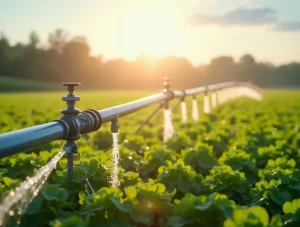
Top Innovations in Agricultural Pipe Fittings for Water Savings [2025]
Introduction to Agricultural Pipe Fittings and Water Sustainability Agricultural pipe fittings play a pivotal role in building efficient irrigation systems, crucial for modern farming practices. By exploring the versatility of

Expeart Tips from MDPE Pipe Fittings Manufacturers to Avoid Failures
Expeart Tips from MDPE Pipe Fittings Manufacturers to Avoid Failures Understanding MDPE Pipe Fittings: An Overview MDPE (Medium Density Polyethylene) fittings, used extensively in gas and water systems, offer strong,

UPVC vs CPVC Pipe Fittings: Technical Specs and Applications
UPVC vs CPVC Pipe Fittings: Technical Specs and Applications Introduction to UPVC Pipe Fittings in Pressure Systems UPVC pipes and fittings are essential components in modern plumbing and industrial systems,
Request a Free Consultation
Get personalized plumbing solutions with a free consultation from Fitwell.

